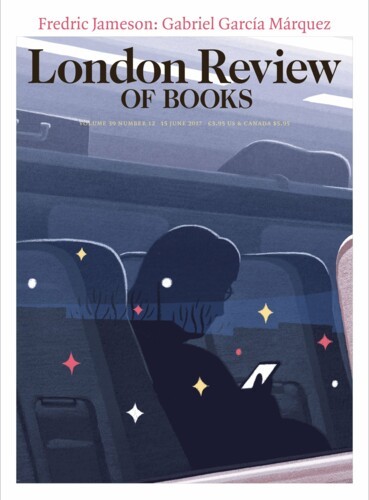The events of Danny Boyle’s new film, 28 Years Later, are not too far away. It’s set in the near future, but the prologue takes us back to 2002, which is when Boyle’s earlier film 28 Days Later was released. (There is also 28 Weeks Later, the 2007 sequel directed by Juan Carlos Fresnadillo, but this seems to borrow a piece of the storyline without becoming part of the sequence.) In the first film a virus strikes Britain, killing millions and turning survivors into zombies, smeared with blood and often naked. The prologue to 28 Years Later shows a group of massive zombies killing a priest, who is mysteriously smiling and passes a young boy a cross to remember him by. The priest is sure that this is the end of the world and is ready to welcome it as such.
It’s not the end of the world, but the world has changed. The virus has spread beyond Britain, and continental European nations have found a way of keeping it at bay. But the British haven’t, and the mainland of England, Scotland and Wales has become a vast space of quarantine. The virus is called Rage, allowing for a crisp double meaning: the virus is rage and rage is a virus. To be alive and infected is to be angry.
In the first film, a man (Cillian Murphy) awakes from a coma to an almost entirely empty London. There is some virtuoso camera work here: famous streets and bridges filmed in the early morning without a soul in sight. A double-decker bus lies on its side like an extra for Moby-Dick. Then Murphy learns there are one or two people left who are not infected, and after visiting the house of his dead parents in Deptford, they set off together for Manchester, where there is supposed to be a haven organised by the army. There is a haven, but it rapidly turns into something else. A member of the travelling group (Naomie Harris) says that ‘staying alive is as good as it gets.’ Later, paradoxically, as things go from bad to worse, she modifies her view. Even this fragile world gets a little better if you care for someone and are cared for in return.
This principle could be the motto of the main characters in the new movie: a child, a mother, a father and a doctor. The other characters seem to have decided that the only useful response to crisis is endless jollity. The setting is the island of Lindisfarne, connected to the quarantined mainland by a long causeway. This is where a crowded society of the uninfected lives. After the priest’s death we meet a family in Lindisfarne. The boy and the father, Spike and Jamie (Alfie Williams and Aaron Taylor-Johnson), are preparing for a trip to the mainland, a sort of voyage of initiation for Spike, who is twelve years old. His mother, Isla (Jodie Comer), is affectionate with her son but angry and unsettled with others. She seems ill, and the implication is that there are forms of imbalance that have nothing to do with the virus. In many ways the world has returned to the Middle Ages. The preferred weapon is the bow and arrow (we later see Spike kill his first infected person as part of his induction), unless you’re lucky enough to have a ballista.
The trip to the mainland is dangerous, but Jamie and Spike survive, fending off different species of the infected – large grovelling figures who look like two-legged pigs, and others who are erect and active, like athletes gone crazy. (These are called Alphas.) For good measure, the dilapidated old house in which Jamie and Spike take shelter crumbles down while they are in it.
Back in Lindisfarne it is party time, with lots of singing and drinking. Spike catches sight of his father having sex with a woman who is not Isla. Matured perhaps by his mainland adventure, Spike thinks his mother’s illness may be related to his father’s failure to care for her, and plans another journey to the mainland, this time with Isla, in search of the doctor his father will not consult. When we see that Jamie associates the doctor, Kelson (played by Ralph Fiennes), with a field of dead bodies spread out as if to make a sort of rustic artwork, we may feel he is not wrong.
Spike will have none of this – for him a doctor is a solution – and he and Isla take off across the causeway. They make it quite a way on to the mainland, by the looks of the landscape and the appearance of Antony Gormley’s Angel of the North sculpture. Isla is half with it and half not, and when one of the infected attacks, she saves Spike’s life almost by accident. In the next sequence, the most haunting part of a haunted movie, she shows a kindness that perhaps in this context only a demented person could offer.
Following the pattern suggesting that no one survives unless someone saves them, Spike and Isla are rescued from the infected by a Swedish marine, Erik, who was stranded in Northumberland when his colleagues died. And then we are looking at a train stuck under a bridge, presumably becalmed since the virus arrived. Spike, Isla and Erik (Edvin Ryding) climb into the train and walk down the central aisle of a coach. They see a naked woman in pain, and Isla not only knows the woman is about to give birth but actually helps her to do it. Erik kills the mother – she is one of the infected – but spares the child, and an Alpha beheads Erik. The doctor that Spike and Isla are looking for suddenly appears and sees off the Alpha. Are we confused yet? As in the 2002 film, three figures we care about survive when almost everyone else dies.
There is one more stage in the journey before our heroes can try to make it home with the newborn in tow. Kelson diagnoses Isla with terminal cancer and recommends euthanasia, having convinced Spike that this is the right road. Spike carries – it’s hard to think of this as any sort of actual project – his mother’s skull to the top of a mountain of skulls which is the memento mori Kelson has been working on. Kelson now starts calling the column a ‘memento amoris’ instead of a memento mori. Too academic as well as too sentimental perhaps, but Fiennes’s performance as the eerie doctor, creator of an intense, eccentric heart of resistance when resistance is always too late, helps to carry the day.
The film is compelling to watch, even if we can’t like much of what we see. We can’t answer the questions it asks and we can’t hide from it in allegory. But we could perhaps prepare ourselves a little for a time when the virus of rage finds too many friends.
Send Letters To:
The Editor
London Review of Books,
28 Little Russell Street
London, WC1A 2HN
letters@lrb.co.uk
Please include name, address, and a telephone number.

